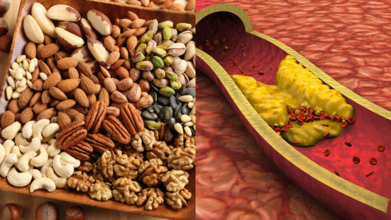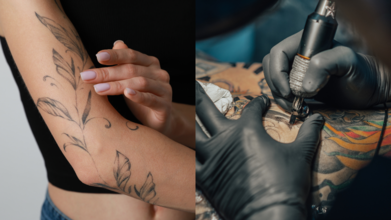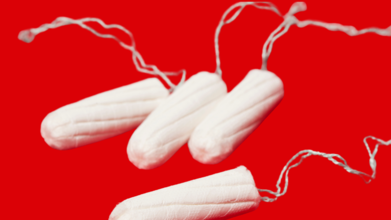- Health Conditions A-Z
- Health & Wellness
- Nutrition
- Fitness
- Health News
- Ayurveda
- Videos
- Medicine A-Z
- Parenting
- Web Stories
Scientist Reveals the Tiny Foods That Can Transform Your Cholesterol in Just 10 Days

If you’ve ever stared at a packet of mixed nuts wondering whether to sprinkle them over your porridge or just eat them by the handful, here’s your permission slip: go for it. According to Dr Sarah Berry, a professor at King’s College London and Chief Scientist at ZOE, nuts and seeds are not just snackable; they are good for cholesterol crunching. In fact, swap some of your less healthy fats for these nutritional powerhouses, and you could lower your cholesterol by up to 10 per cent in just 10 days. That is faster than most fad diets.
The 10-Day Cholesterol Challenge
High cholesterol often feels like one of those invisible problems, until it suddenly is not. It can quietly build up in your arteries, increasing the risk of heart attacks and strokes. But Dr Berry, during an appearance on the Zoe podcast, said that you can make a real difference in under two weeks by tweaking, not overhauling, your diet. It’s not about eating less fat; it’s about eating the right kind of fat.
And this is where most people get it wrong. “Don’t do a low-fat diet,” Dr Berry warns, calling the idea “radical” to anyone still following decades-old advice. Instead, aim for a moderate-fat diet rich in polyunsaturated and monounsaturated fats—exactly the kinds you’ll find in nuts, seeds, and certain oils.
Why Low-Fat Diets Miss the Point
It is tempting to think cutting fat will cut cholesterol, but Dr Berry explains that’s a trap. Not all fats are bad. Saturated fats, found in red meat and some processed foods, can push LDL cholesterol—often dubbed “bad” cholesterol—into dangerous territory. But polyunsaturated fats, abundant in seeds, seed oils, and many nuts, do the opposite.
Simply adding nuts to your meals, whether as a snack, salad topping, or nut butter, can slash LDL cholesterol by 5 to 10 per cent. You have to make a swap. This benefit comes from replacing “harmful” fats, like those in certain animal products and fried foods, with healthier plant-based fats.
Seeds: The Cholesterol Fighters
Sunflower seeds, flaxseeds, chia seeds—they’re all loaded with polyunsaturated fatty acids that support heart health. Stir them into yoghurt, blend them into smoothies, or scatter them over roasted veggies. You’ll barely notice the extra effort, but your arteries will thank you.
Seed oils, like sunflower and flaxseed oil, can also be smart choices in moderation, adding healthy fats to your cooking without the cholesterol-raising impact of certain animal fats.
Rethinking Dairy, Meat, and Carbs
Dr Berry isn’t out to demonise all animal products. Fermented dairy like yoghurt and cheese gets a surprising green light. These foods, she says, don’t have the cholesterol-raising effect you might expect from their saturated fat content. That’s not permission to live on brie and cheddar, but it is a reason to stop fearing your cheese board.
Red meat, however, is a different story. Packed with saturated fats, it’s a direct contributor to rising cholesterol levels. Swapping steak nights for lentil stews or chickpea curries a couple of times a week could make a noticeable difference to your numbers.
Then there’s the carbohydrate conundrum. The real trouble lies with refined carbs like white bread, white rice, and sugary snacks. These are rapidly processed by your body and can be converted into triglycerides, which worsen cholesterol profiles. But whole grains are firmly in the “good for you” column. Wholegrain bread, brown rice, oats, and quinoa can help improve cholesterol levels when they replace the refined stuff.
Building Your 10-Day Cholesterol Menu
Swap your morning white toast for porridge topped with walnuts and chia seeds. Your mid-morning biscuit could become a small handful of almonds. At lunch, toss sunflower seeds into your salad, and use olive or sunflower oil for dressing. Dinner might feature grilled salmon or chickpeas instead of steak, with a side of quinoa instead of white rice.
Why This Works So Fast
Cholesterol levels can be surprisingly responsive to dietary changes. LDL cholesterol particles are constantly being produced and cleared from your bloodstream. When you replace saturated fats with healthier fats, you improve your body’s ability to remove LDL cholesterol. Combine that with reducing refined carbs and upping your wholegrain intake, and the improvement can be measurable in just days.
Dr Berry’s advice is refreshingly realistic: no calorie counting, no extreme restrictions, just sensible swaps. It’s about building habits you can maintain beyond the initial 10 days, keeping your cholesterol low for the long haul.
Forget the idea that lowering cholesterol means bland food and joyless salads. With nuts, seeds, and the right fats, you can eat deliciously and still give your heart a health boost in record time.
Why Your Tattoo Looks 'Cloudy' During Healing: Experts Demystify Recovery Process

You walk out of the tattoo studio with fresh ink that looks bold, bright, and perfect. But within a few days, you notice the colours seem duller, almost blurred. Do not worry! This cloudy look is a normal part of healing. According to dermatologists and tattoo artists, that milky veil over your design is not the end of your tattoo dreams. It is simply your skin doing its job.
The Science of the Skin Screen
As Dr Pragati Gogia Jain, DNB (Dermatology) at ApolloMedics Hospital, Lucknow, explains, our skin has layers. The top layer, called the epidermis, is made up of keratinocytes. When these cells are young, they’re packed with organelles and nuclei, making them opaque. As they mature, they lose these structures, becoming more transparent.
When you get a tattoo, the needle bypasses the epidermis and deposits pigment in the dermis. This process causes a controlled injury, triggering inflammation. In the days that follow, damaged keratinocytes in the epidermis start shedding (desquamation), and the fresh replacements are immature and cloudy.
“This cloudy layer scatters light, making the tattoo look dull,” says Dr Jain. “It’s temporary, and as the epidermis completes its 28-day turnover cycle, your tattoo will regain its clarity.”
What’s Happening Beneath the Tattoo Ink
Sahil Bali, tattoo artist at Devil’z Tattooz, says the fresh-out-of-the-studio vibrancy is like an Instagram filter: beautiful, but fleeting. “Right after we finish, the ink is just beneath intact skin, so the colours look sharp,” he says. “But as your immune system gets to work, a thin layer of scabbing or peeling skin forms. It’s made of dried plasma, old skin flakes, and natural oils, which aren’t transparent.”
This layer dulls the appearance of the tattoo. From day four to day ten, peeling starts. The temptation to pick at those flakes is real, but doing so can yank out pigment and cause patchy healing. “Hands off is the golden rule,” warns Bali.
Why Tattoo Aftercare Matters
While most cloudiness is part of the healing process, poor aftercare can make it worse. Dr Jain says that slathering on too much ointment can trap moisture between skin layers, creating a hazy effect. Over-moisturising can also make the peeling phase messy, while under-moisturising can slow healing.
The golden trio of aftercare:
- Keep it clean, but not soaking wet
- Moisturise lightly with fragrance-free ointment or lotion
- Avoid scratching, picking, or exfoliating the area until it’s fully healed
The Healing Timeline: What to Expect
- Week 1: Swelling and inflammation can make colours look slightly different. Cloudiness starts to creep in.
- Week 2: Peeling is in full swing, and the haze is most noticeable. Do not pick.
- Weeks 3–4: New skin settles in, clarity returns, and your tattoo looks almost like day one.
- Weeks 4–6: Full healing. Your tattoo now has its true colours and crisp lines.
Your tattoo’s journey is a cycle: vibrant due to fresh ink, hazy during inflammation and peeling, then clear again as the skin regenerates. In short:
- The cloudy phase is temporary.
- Don’t touch, scratch, or peel.
- Follow optimal aftercare to prevent infection.
- Always ensure your artist uses fresh, sterilised needles.
As Bali puts it, “Your tattoo is for life. A couple of hazy weeks is nothing compared to years of wearing a clear, beautiful design.”
ADHD Medication May Cut Risks of Suicide, Substance Misuse, and Criminality, Study Finds

Credits: Canva
Medication prescribed to people with attention deficit hyperactivity disorder (ADHD) not only helps them concentrate but may also reduce the risk of suicidal behavior, substance misuse, transport accidents, and criminal activity, according to new research.
ADHD affects an estimated 2.6 million people in the UK. Globally, it impacts around 5 per cent of children and 2.5 per cent of adults. Despite its prevalence, in the UK just over half of those diagnosed receive medication for the condition.
Large-scale study tracks impact over two years
Researchers from the Karolinska Institute in Sweden analysed data from national health registers collected between 2007 and 2020. The study included 148,581 individuals aged six to 64 who were newly diagnosed with ADHD.
Of these, 57 per cent began drug treatment for ADHD, with methylphenidate, a commonly prescribed stimulant, used by 88.4 per cent of those taking medication. The rest received no medication after diagnosis.
The study, published in the BMJ, examined how often participants experienced suicidal behaviours, substance misuse, accidental injuries, transport accidents, and criminal offences in the two years following their diagnosis.
Significant reductions in risky behaviours
After adjusting for factors such as age, sex, education level, psychiatric history, and other health conditions, the researchers found notable benefits among those taking medication.
ADHD drug treatment was associated with a 17 per cent reduction in suicidal behaviour, a 15 per cent drop in substance misuse, a 12 per cent decline in transport accidents, and a 13 per cent reduction in criminality.
Although the reduction in first-time accidental injuries was not statistically significant, those with recurrent incidents saw improvements across all five areas. Among this group, medication was linked to a 15 per cent reduction in suicide attempts, a 25 per cent decrease in substance misuse, a 4 per cent drop in accidental injuries, a 16 per cent fall in transport accidents, and a 25 per cent reduction in criminality.
Why these effects may occur
ADHD symptoms often include difficulty paying attention, high levels of activity, and impulsive behaviour. According to the NHS, stimulant medication works by increasing activity in certain brain areas that help control attention and regulate behaviour.
Study authors suggest that reducing impulsivity could lower the likelihood of aggressive acts, thereby cutting criminality rates. Improving attention may also reduce the risk of transport accidents by minimising distractions.
Need for better awareness
Samuele Cortese, Professor of Child and Adolescent Psychiatry at the University of Southampton and one of the study’s authors, said more needs to be done to educate people on the long-term risks linked to untreated ADHD.
“Commonly people think ADHD is overdiagnosed but there are still many people who have ADHD that are not diagnosed, and many are exposed to these risks,” he said.
He added that while side effects such as reduced appetite and difficulty sleeping can occur, they often improve over time or can be managed effectively.
The authors concluded that these findings should be considered in clinical decision-making and in public debates about ADHD medication. By improving attention and self-control, the drugs may help safeguard both health and social outcomes for those living with the condition.
Why Does Traditional Chinese Medicine Discourage Women From Using Tampons On Their Periods?

Credits: Canva
"Women in China do not wear tampons. In fact, if you are trying to find tampons in Chinese supermarkets or drug stores, you will struggle to find one," says Sara Jane Ho, who calls herself an Eastern healer and storyteller and hosts the Netflix podcast Mind Your Manners. She is also the cofounder of Antevortal Laboratories, which makes intimate care inspired by Traditional Chinese Medicines (TCM).
Sara goes to talk about why Chinese women don't use tampons. The reason is backed by TCM, she says. She says, "In Chinese culture, we emphasize the free flow of blood and qi." 'Qi' in Chinese medicine means the vital energy or the life force.
She then poses a question: "What is supposed to come out naturally, should not be stuffed back up there, right?"
She further explains that as per TCM, tampons block the natural downward flow of menstrual blood, which leads to "stagnation or cramps or other imbalances and in TCM keeping the womb warm is really essential." She also says that it is believed that tampons cause womb and the uterus to be cold, which can lead to some fertility issues, or menstrual pain.
She says while for West, this may not be an acceptable reason to not use a tampon, recent studies have shown that tampons too contain harmful chemicals, fragrances, and microplastics, which makes it harmful for usage.
What Does The Study Say About Tampons And Safety
It is true, in fact, a 2024 study published journal Environmental International, titled Tampons as a source of exposure to metal(loid)s, used very high heat acid to leach heavy metals from tampons. The researchers were testing to see if tampons contained 16heavy metals, including arsenic, copper, lead, and iron.
The tampons they tested came from several brands, some were even organic. The result showed that each of the 60 samples contained heavy metals, with 12 of the heavy metals found in every tampon. While it is not known how exactly did these metal end up there, it may be possible that the plant used to make the tampons may have absorbed these metals form the soil or chemicals or pesticides. Another reason could also be during the time of processing.
Another thing which was found was the use of PFAS, sometimes called the "forever chemicals", and stands for per- and polyfluoroalkyl substances.
The popularity of PFAS makes it difficult to know exactly how they impact health; however, some studies have reported they may be harmful to humans and animals, according to the United States Environmental Protection Agency.
China And Tampons

Back in 2016, when China's Olympic swimmer Fu Yuanhui opened up about being on her period during the competition in Rio, and received praised from the Western media for using her platform and breaking the stigma, back at home, she was questioned on how can she swim while being on her period? As the Guardian also reported, it is because only 2% women use tampons, and so many did not think it would have been possible for anyone to swim on their period.
The Guardian in its Women's Blog, reports: "The question rang everywhere: “You can swim on your period?” Many around me (including myself) had believed that elite female athletes simply adjusted the timing of their period so as to not have to deal with it during major events. Let’s face it, even if it doesn’t affect performance, you hardly want to be “on” when trying to be at your best.
Some users of Weibo (China’s equivalent to Twitter) were genuinely asking how come Fu wasn’t making the pool red."
"Chinese medicine is also hugely influential, too, if only subconsciously, and its basis in non-invasive treatment creates unease around putting a foreign object into the body, for hours at a time. It is also seen as potentially harmful for girls who are still “growing”," noted the Guardian report.
But Is It Safe To Use Tampons?
While it is true that harmful chemicals have been found in tampons, there are safety practices one can follow to help prevent infections while using a tampon. These are:
- Practice good hand hygiene by washing your hands before and after inserting a tampon.
- Change your tampon every 4 to 6 hours.
- Only use tampons while you are on your period.
- Cancer patients with low white blood cell counts should consider avoiding tampons to reduce the risk of infection.
There are also alternatives to tampons that one can use, including pads, period underwear, and menstrual cups.
© 2024 Bennett, Coleman & Company Limited

